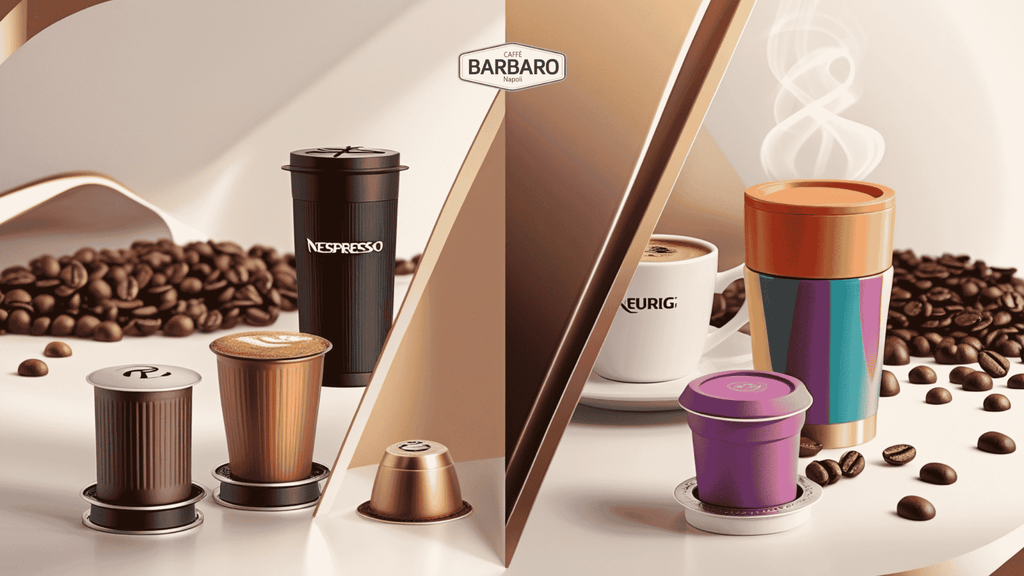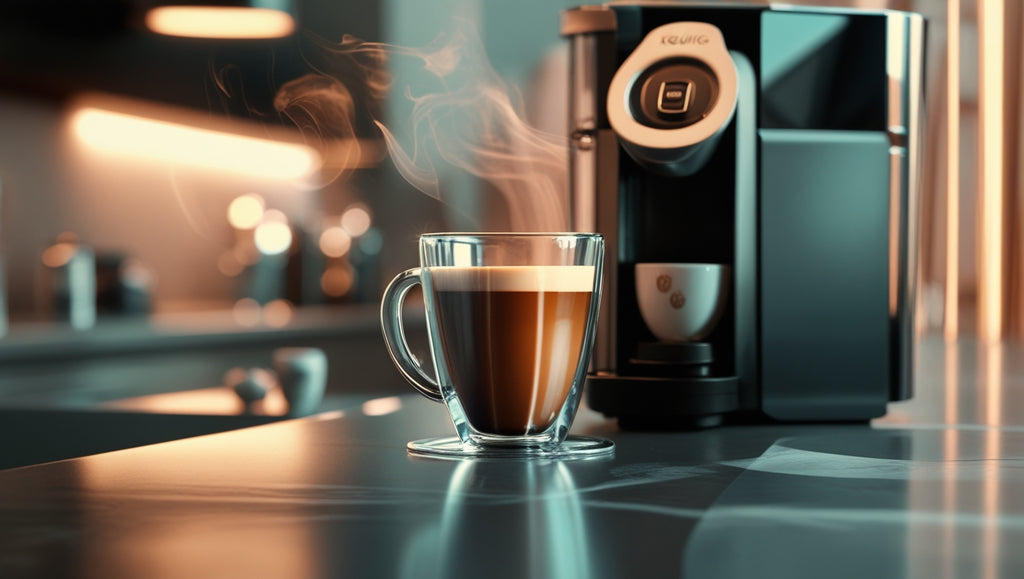
The Art of Italian Espresso: How to Make the Perfect Shot at Home

Introduction
Espresso is more than just a coffee; it's an experience. Originating in Italy, this rich and intense shot of coffee has become a worldwide favourite. Italian espresso is a beloved daily ritual for many, embodying the essence of Italian culture and passion. Whether you're a coffee connoisseur or just looking to replicate that perfect shot at home, learning the art of making espresso can open up a world of flavour.
In this guide, we’ll explain how to make an authentic Italian espresso at home, from choosing the right equipment to understanding the critical factors that influence taste.
What is Italian Espresso?
Italian espresso is a concentrated form of coffee brewed by forcing hot water through finely ground coffee beans under high pressure. The result? is a shot of coffee that’s rich, bold, and full of flavour.
Unlike regular coffee, which uses drip methods, espresso has a unique preparation process that extracts more intense flavour. It’s typically served in small amounts due to its concentrated nature, and it forms the base for many other coffee drinks like lattes, cappuccinos, and macchiatos.
Espresso holds a special place in Italian culture. In Italy, it’s more than just a caffeine boost; it’s an important part of daily life, often enjoyed at bars with friends, colleagues, or even alone in moments of reflection.
The Essential Equipment for Making Espresso at Home
Making the perfect espresso at home requires some key equipment. Here's what you'll need to get started:
- Espresso Machine – This is the heart of the espresso-making process. There are manual, semi-automatic, and fully automatic machines, with semi-automatic being the most popular for home use. A high-quality espresso machine is crucial for achieving the right pressure and temperature.
- Grinder – Freshly ground coffee is essential for a perfect shot of espresso. Burr grinders are preferred over blade grinders because they provide a consistent grind size, which is crucial for proper extraction.
- Tamper – This tool is used to evenly press the coffee grounds into the portafilter. A good tamp ensures even extraction, which is key to a smooth espresso.
- Fresh, High-Quality Coffee Beans – The beans you choose are essential to the flavour of your espresso. Opt for dark-roasted beans, as they provide a richer taste when brewed under high pressure.
Selecting the Right Coffee Beans for Italian Espresso
The key to a great Italian espresso starts with the beans. While the world is full of coffee beans, not all of them are suitable for espresso. Here’s what to look for:
- Arabica Beans: These beans have a smoother, more complex flavour and are often preferred for espresso in Italy.
- Robusta Beans: Often used in blends, Robusta beans have a stronger, more bitter flavour and higher caffeine content. They’re ideal for creating a more intense espresso.
Look for beans that are freshly roasted, ideally within the last two weeks. The fresher the beans, the better the shot. Whole beans are always preferable to pre-ground coffee, as they maintain their flavour for longer.
Step-by-Step Guide to Making the Perfect Italian Espresso
Now that you have your equipment and beans, let’s break down the steps to make the perfect Italian espresso.
- Grind the Beans – Set your grinder to a fine grind. The grind should resemble table salt in texture. Too coarse, and the water will flow through too quickly; too fine, and it’ll clog the machine.
- Preheat the Espresso Machine – Turn on your espresso machine and allow it to heat up for a few minutes. This ensures the water reaches the correct temperature for brewing, usually around 190°F to 200°F (88°C to 93°C).
- Tamp the Coffee Grounds – Once you’ve filled the portafilter with ground coffee, use a tamper to press the grounds down evenly. Apply firm, consistent pressure to create a smooth, level surface.
- Brew the Espresso – Lock the portafilter into place on the machine and start the brewing process. A perfect shot should take about 25-30 seconds to brew, yielding around 1 ounce (30 ml) of espresso.
Key Factors That Affect the Taste of Espresso
Several factors impact the flavour of your espresso shot. Here’s a look at the most important ones:
- Water Temperature – Water that's too hot or too cold can lead to poor extraction. The ideal brewing temperature is around 190°F to 200°F (88°C to 93°C).
- Grind Size – The grind size affects the speed at which water flows through the coffee. A finer grind increases the resistance, slowing down the extraction, while a coarser grind allows water to pass through too quickly.
- Pressure – Espresso requires a high brewing pressure of around 9 bars. Most machines are designed to provide this pressure, but ensure your machine is working correctly.
- Freshness of Beans – As mentioned earlier, fresher beans make a significant difference in taste. The beans should be ground right before brewing to preserve their oils and flavours.
Common Mistakes When Brewing Espresso at Home
Even experienced baristas make mistakes from time to time. Here are some common ones to avoid:
- Using Stale Beans – Old beans lose their oils and flavours, leading to a bland espresso.
- Incorrect Grind Size – A grind that's too coarse or too fine will prevent the water from extracting flavours properly.
- Not Tamping Correctly – Uneven tamping can lead to uneven extraction, creating a shot that's either too weak or too bitter.
How to Serve Italian Espresso
Espresso is typically served in small, pre-warmed cups. In Italy, it’s often enjoyed standing at a bar, sipped quickly to savour the moment. You can pair your espresso with a small glass of sparkling water to cleanse your palate beforehand.
How to Enhance Your Espresso Experience
While Italian espresso is fantastic on its own, there are ways to enhance the experience:
- Pairing with Food – Try pairing your espresso with a piece of dark chocolate or a biscuit for a truly Italian experience.
- Adding Flavourings or Milk Alternatives – While traditional espresso is served black, feel free to add a splash of milk, a little vanilla syrup, or even some cinnamon for a unique twist.
Conclusion
Making the perfect Italian espresso at home is a blend of art and science. With the right equipment, fresh beans, and attention to detail, you can create a rich, full-bodied shot of espresso that rivals what you'd find in Italy.
With practice, you'll perfect your technique, and soon, you'll be able to enjoy a perfect espresso every time. Cheers to your espresso journey!
FAQs
What’s the difference between espresso and coffee?
Espresso is brewed under high pressure using finely ground beans, creating a concentrated and rich coffee. Regular coffee is brewed more slowly and is less intense.
How long should an espresso shot take to brew?
A perfect espresso shot should take between 25-30 seconds to brew.
Can I use pre-ground coffee for espresso?
While it’s possible, freshly ground coffee will always produce a better shot. Pre-ground coffee loses flavour and freshness quickly.
How do I store espresso beans?
Store your beans in an airtight container in a cool, dark place. Avoid keeping them in the fridge as they can absorb moisture and odors.
What should I do if my espresso tastes bitter?
If your espresso is bitter, it may be due to over-extraction. Try adjusting the grind size, tamping more lightly, or using slightly cooler water.

